In the studio with Australian fashion forces Akira Isogawa and Jordan Gogos
Ahead of showing a collaboration at Australian fashion week, Akira Isogawa and Jordan Gogos reveal how they’ve found creatively kindred spirits.
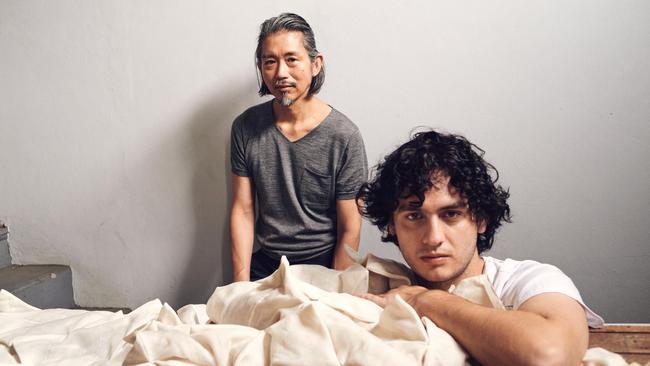
After Jordan Gogos’s Australian fashion week show last year, his second ever, he was depleted. Giving it all in an explosion of densely layered colour on his art-meets-fashion pieces and colossal set design, all said taking in 60 collaborators and garnering his label Iordanes Spyridon Gogos one-to-watch status, he questioned what was next. “I was actually quite fatigued. I really didn’t want to have a show in general.”
What do you when you don’t know what to do? You cold call an expert. Or email, as Gogos did, Australian living legend and one of our most revered designers globally, Akira Isogawa. Who else but the preternaturally serene and understated Isogawa to offer a focused, concise solution?
After a delayed response – Isogawa was in London helping Australian philanthropist Gene Sherman with an exhibition, one of the projects he’s been quietly working on since his last runway outing in 2018 – the Japanese-born Australian designer agreed to connect, first laying out his state of mind.
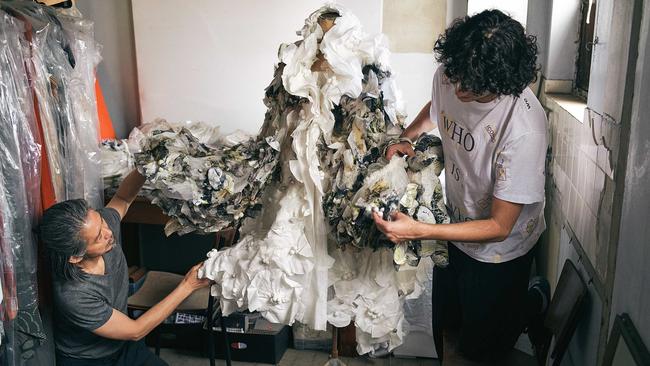
“He said, ‘Look, I’m really in a place where I don’t want any chaos. I’m actually quite calm right now.’ And I was like, ‘That’s so funny, because I really need that,’” recounts Gogos. Isogawa has been watching the Parsons graduate for two years. “The moment you go online, here’s Jordan – my god …,” he says, trailing off. “What is actually special about him is that he is so identifiable. You can see, ‘Oh, that’s Jordan.’ It just stays in your mind, it’s in there, in my head.”
That was in late 2022 and today, four months later, the results are underway in Isogawa’s Marrickville studio in the still industrial part of the Sydney suburb where repair shops and food wholesalers coexist with recording studios and artist enclaves. The low-slung red brick warehouse is intermittently cloaked in a roar – the infamous teeth-chattering effect of the low flight path. Inside, sepia-toned light from small windows illuminates a collection of pattern pieces, a cluster of sewing machines, bolts of fabric stacked under work tables and two floors of Isogawa’s archive. Tags hanging from racks, holding a bounty of garments that look like flat-pack 2D figures in ethereal folds with smatterings of exquisite embellishment, announce seasons like ‘automne/hiver ’07’ – hinting at Isogawa’s successful Paris shows. “You don’t need to look much further – if there’s something to be inspired by it’s probably here,” Gogos says.
The results, showcased at Australian fashion week this month, are surprising – given Isogawa’s reputation for refinement and minimalism drawing from his Japanese heritage, and Gogos’s colour delirium and surreal, oversized shapes, you’d expect a clear delineation of who did what.
–
“We have a vision, that clear vision, and then we just actually make it happen. As simple as that” — Akira Isogawa
–
Not so. Take a dress with a hand-coiled bustier. The fabric has all the cross-hatching of Gogos’s latticed stitches on the fabrics he creates using dead stock scraps, felted together in a weighty result via a specialised machine. Here though, it is mysteriously airy in a frothed ball skirt.
“I’ve scanned it and turned it into a digital print,” he elucidates. A whisper-thin tulle has been overlaid with a hint of a print just visible – Isogawa’s archival fabric from around 2002. Gogos, arriving in the studio one day, assumed it was his own. “I didn’t actually notice for ages, and then I went, ‘Wait a second …,” he says, making both of them laugh.
Everything is less push-pull, more a bleeding of the duo’s visions. Like colour, noticeably subdued compared to Gogos’s past collections. Isogawa, preoccupied with the techniques Gogos used, pushed this side of things. “You say fabric, then colour. I really wanted to pivot a little bit away from being the rainbow designer or the Willy Wonka that people kind of described me as,” says Gogos.
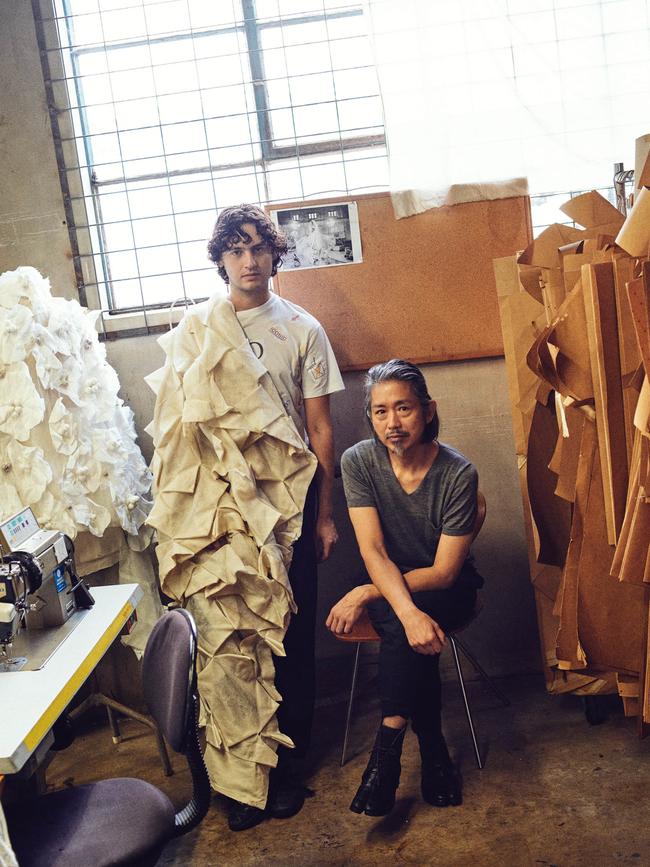
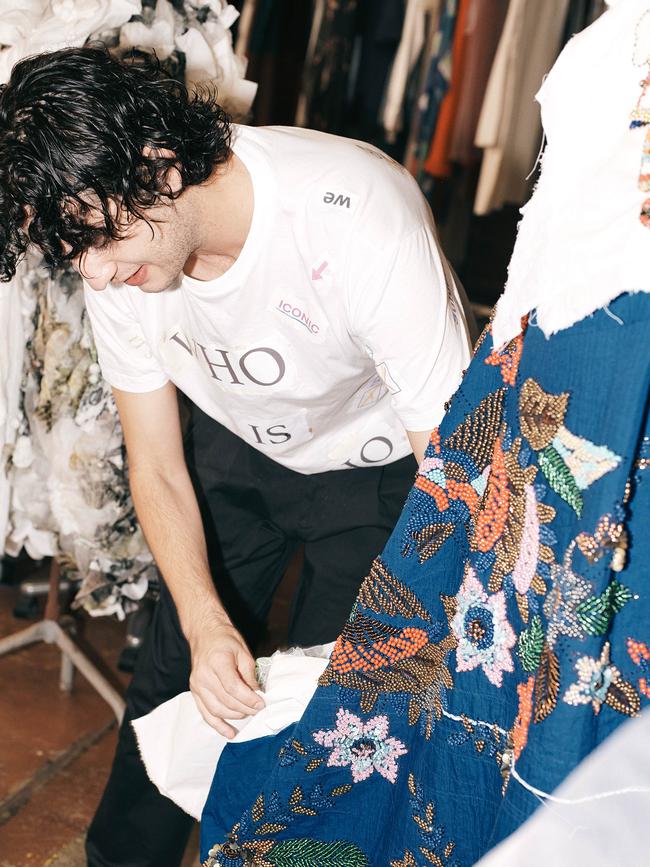
Then there’s the origami pieces, still in progress. Working with patternmaker and origami master Takahiro Shirai for two decades, Isogawa has been executing these pieces, taking enormous amounts of fabric, reducing them to a third in size via complex folds, to challenge the reign of tailoring as the apogee of precise design. Usually Isogawa works with paper thin fabrics, but instead he’s taking on Gogos’s multilayered, hand painted fabrics which the latter describes as “slabs of meat”, with a smile, noting he paid for models’ massages post show last year. “That reminds me, I need to find the thickest hand-needle,” Isogawa quips.
Exceptions to this nebulous intermingling are the hand-beaded teddy bear and Trojan Horse motifs. The bear is Isogawa’s, a reference to his toy animal backpacks, symbolic of his warmth and humour (Isogawa might also be Australian fashion’s most beloved treasure); the horse, Gogos’s brand signature emblematic of “new ideas, new people”, breaking into the industry. They will appear on the front and back of two tops, then flipped. And the red wool socks by knitter Jo Morton, an updated thigh-high homage to Isogawa’s first-ever collection in 1997 when, unable to afford shoes, he bought socks from Gowings for the models to wear.
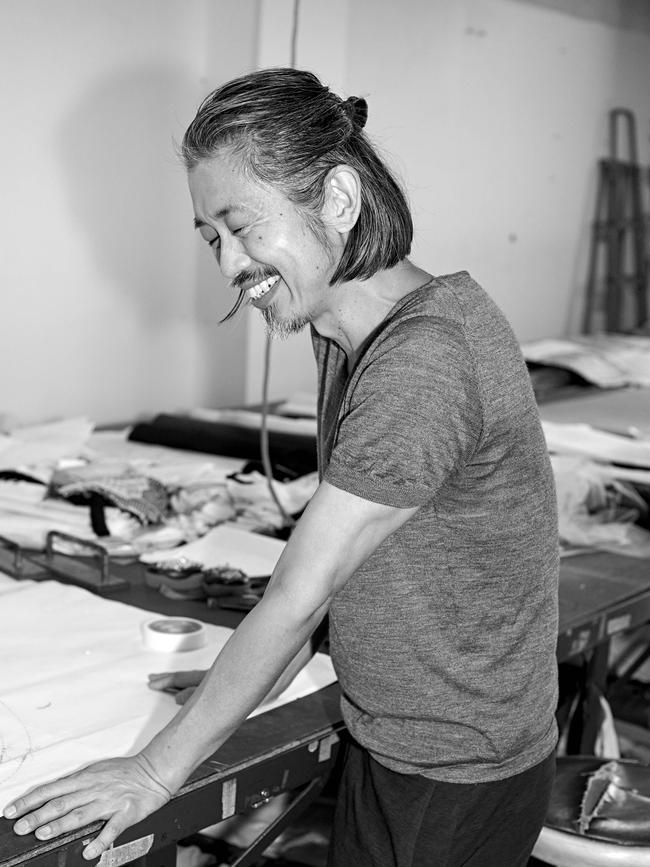
That Isogawa is still making, nearly three decades later, is testament to something Gogos resonates with instantly. “You’ve sold very successfully over the years. But that’s not your focus,” he addresses Isogawa. “I think compromise is that last thing we need to actually consider,” Isogawa responds with conviction that hints at why he has survived what many can’t. “We have a vision, that clear vision, and then we just make it happen. As simple as that.”
Though Gogos is 28 and Isogawa, 59, those words are edifying to the young creative, who also works on art pieces and furniture design, but isn’t preoccupied with commerciality – something commentators note often. “Every question I’ve been asked over time is like, ‘When are you going to sell?’, ‘When are you gonna do this?’” says Gogos. “So to actually connect to the level of creativity first, innovation first, and money comes way later [is nice].”
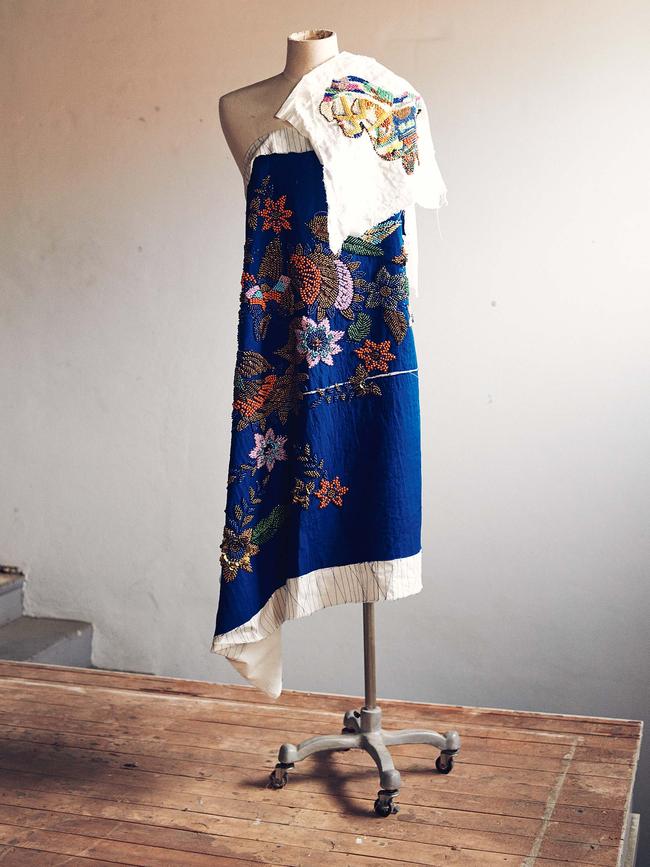
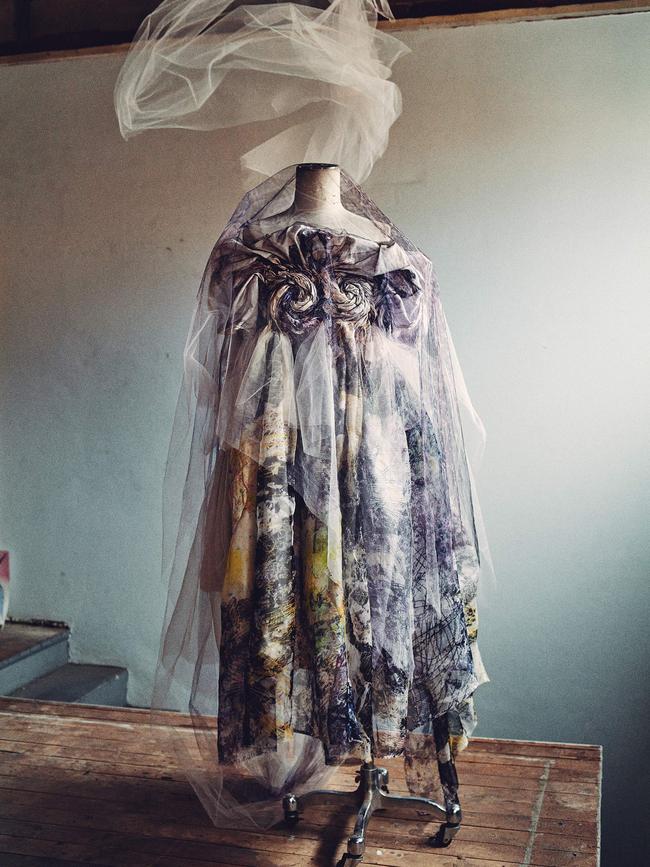
“I don’t think Jordan needs to worry,” Isogawa says. “Because there are people around him … they’re able to actually help and support Jordan to merchandise or whatever it takes to sell.” Gogos here points out Isogawa is “a professional pivoter from selling out”, knowing he maintains loyal clients, his boutique and relationships with his makers. Isogawa recently visited the family business in Bali that has done his beading for 20 years while watching their sons grow up, sleeping in the factory when he goes.
“I think you get a sense when it can’t go further, because it’s a territory that you don’t want to tap into it. It might damage your soul. It’s not worth it,” Isogawa says.
As Australian designers continue to grapple with an uncertain economic climate and the thinning out of local specialised makers and manufacturers, that this kind of creativity isn’t dampened is testament to the spirit of local creatives and their labels, like Akira, now Iordanes Spyridon Gogos. “When I saw J in my inbox,” Isogawa reflects. “That email could not be ignored.”
This article appears in the May issue of Vogue Australia, on sale now.

To join the conversation, please log in. Don't have an account? Register
Join the conversation, you are commenting as Logout